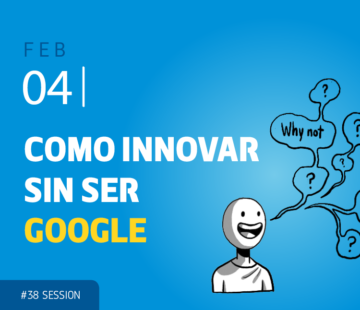Summer is a time for reading about collaboration

Summer is here. And with it, as regularly as higher temperatures and holydays, are also reading recommendations published by newspapers and magazines. It’s logical. Summer is supposed to be a time with more free time; a time with less stress and therefore the right mood to take our minds to worlds different from our ordinary day-to-day life we live in during the rest of the year. It’s also a time to stop, think and plan for improvement next course.
We wanted to keep up with all these newspapers and magazines and the general inclination to recommend readings for current or coming holidays. So here you have some books we think make a good reading for this summer. Of course, all of them on the subject of collaboration within and between organizations, as it could not have been otherwise.
The Silo Effect
From award-winning columnist, journalist and senior editor for the Financial Times Gillian Tett, The Silo Effect shows the importance of cross-disciplinary and cross-cultural collaboration for organizations to succeed. It also shows how the lack of this collaboration sends organizations into deep trouble. Probably this is the book on collaboration with the most interesting case studies. Readers will find cases of organizations getting collaboration right but also of those felled by the lack of it. Specifically, the book includes eight different tales of the silo syndrome: Bloomberg’s City Hall in New York, the Bank of England in London, Cleveland Clinic hospital in Ohio, UBS bank in Switzerland, Facebook in San Francisco, Sony in Tokyo, the BlueMountain hedge fund, and the Chicago police.
Beside the cases, the book also includes some specific suggestions on how some people and organizations can break those silos down to unleash innovation. Author Gillian Tett’s background in anthropology is present when she examines our tendency to create functional departments (silos) or when she answers questions as why do humans working in modern institutions collectively act in ways that sometimes seem stupid, or why are we so often “blind to our own blindness”.
An interesting twist to highlight. Tett does not consider silos as the “evil” player to eliminate. She recognizes silos can also be beneficial, especially in a world as complex as it is today. Silos in the business world can indeed be uniquely valuable containers in terms of organizational efficiency and productivity. But they can also be, of course, major barriers to communication, cooperation and, especially, collaboration. So essentially everything comes to know how to get their benefits but also avoid or prevent their downsides. And Gillian Tett explains how.
Collaborative intelligence
Collaborative Intelligence is the culmination of more than fifty years of original research that draws on Dawna Markova’s background in cognitive neuroscience. Markova and her “Professional Thinking Partner” Angie McArthur are experts at getting brilliant yet difficult people to think together. They share a consulting practice in which they serve as “thinking partners” to clients who need insight in how better to achieve synergistic collaboration within their firm, a group of “patients” that includes some of the world’s top CEOs and creative professionals.
Rooted in the latest neuroscience on the nature of collaboration, Collaborative Intelligence offers tangible tools for those serious about becoming ‘system leaders’ who can close the gap and make collaboration real. This book is full of practical guidance to help the reader to discover his or her own “CQ” or Collaborative Intelligence Quotient. As explained in the book, each individual has a characteristic way of processing cognitive challenges (Mind Pattern), depending on the kind of attention that their brain utilizes: Focused attention, Sorting attention and Open Attention. There are also three languages of thought (Auditory, Kinesthetic and Visual).
Markova includes many worksheets and questions that readers can use to determine not only their own patterns, but those they work with as well. There are also plenty of tips on how to maximize that pattern for effectiveness in personal work and in collaboration with others. Subsequent chapters demonstrate how the knowledge of these languages and triggers can be used in building teams and in optimizing team interactions.
Collaboration begins with you
Collaboration Begins with You focuses on helping leaders at all levels to create and develop a culture of collaboration. Bestselling author Ken Blanchard and his co-authors show that busting silos and bringing people together is an inside-out process that involves the heart (your character and intentions), the head (your beliefs and attitudes), and the hands (your actions and behaviors). From authors’ point of view, clearly none of these “parts” can function without the other. You need your heart, head, and hands to bring about change and build collaboration with others.
An important fact for those who prefer novels to essays. Authors use the business fable as a format to explain a story about creating a collaborative atmosphere in a company, with a main character who is the leader of a cross-department project that fails because the units involved are too competitive with one another. The solution, he learns, is to shift his and other’s heart, head and hands toward collaboration.
